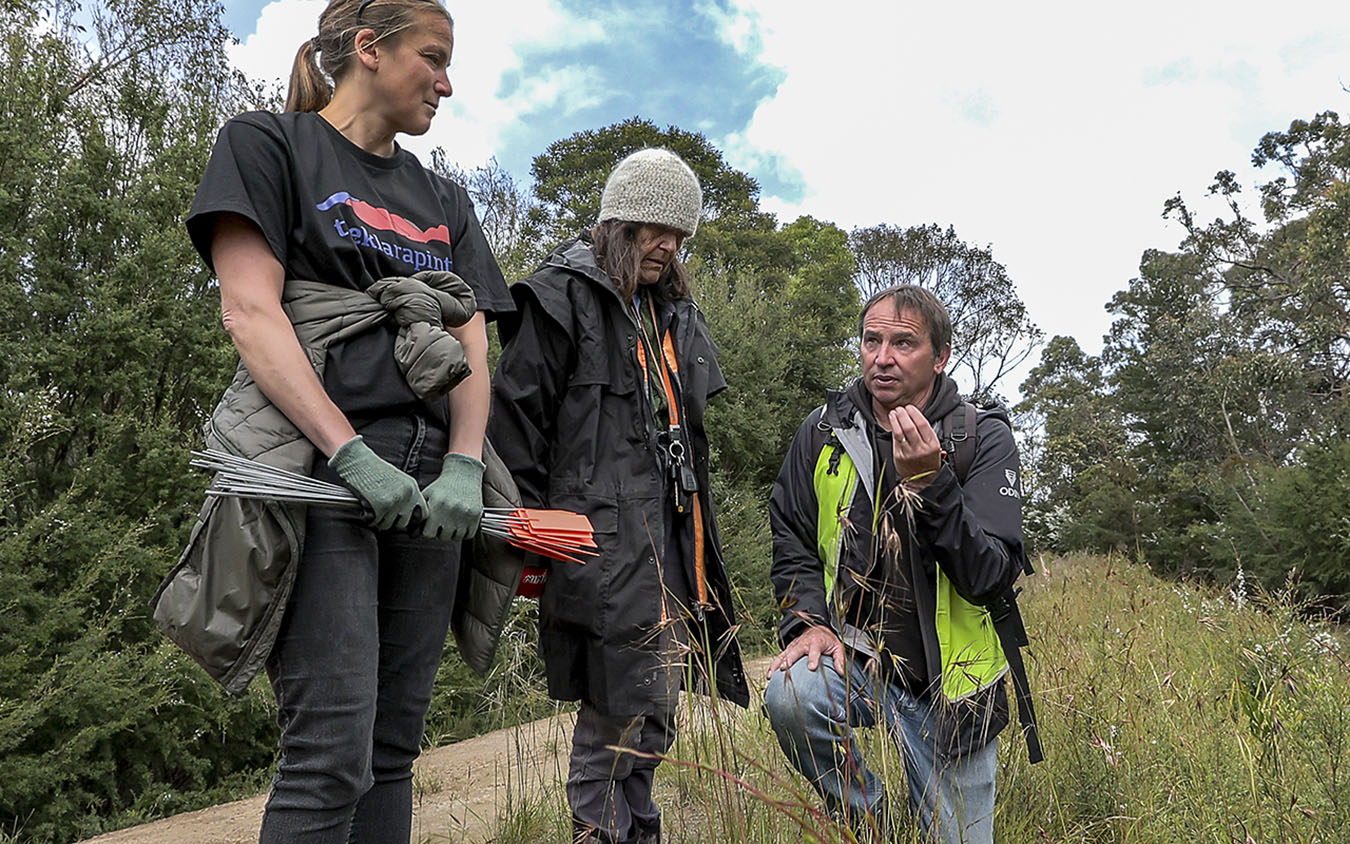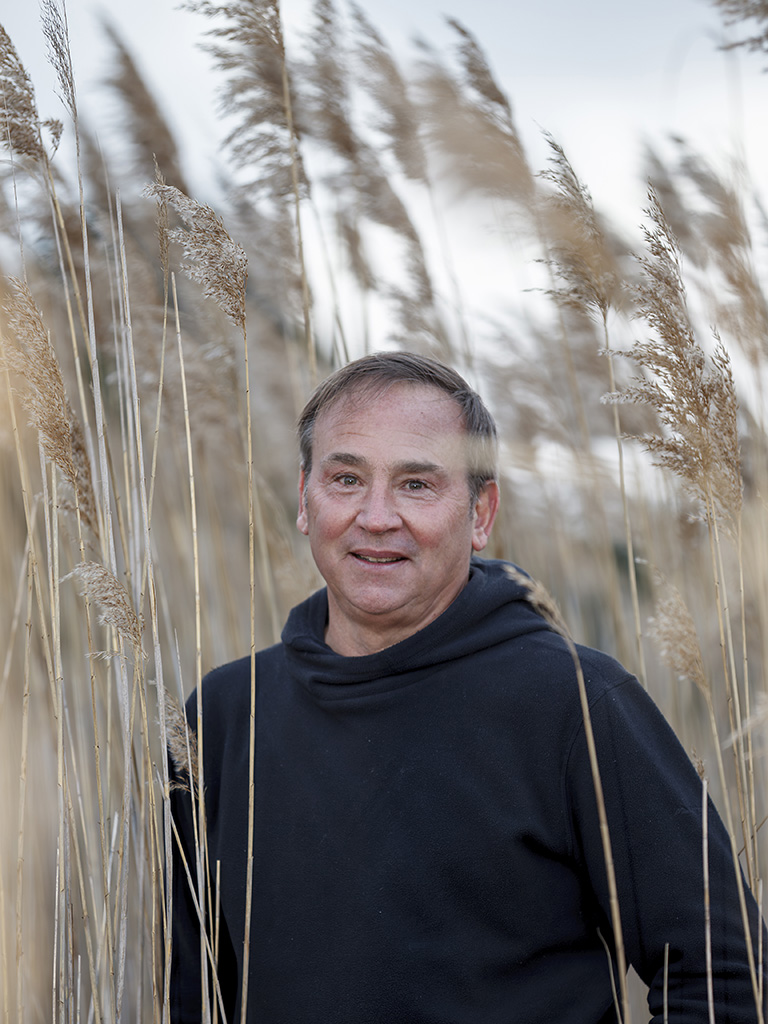
5 minute read
The Bend
By Andrea Louise Thomas Photos Yanni
I’ve always loved being outside - exploring, investigating, and spending time near the beach. Growing up on the Mornington Peninsula, I was spoilt for choice when it came to beautiful natural places. I think my passion for wanting to engage really grew from noticing the gradual changes happening in those places I’ve always loved,” says Hansi Wegner, field officer and founder of Citizen Science Crew at Daangean - Devilbend Natural Features Reserve in Moorooduc.
Founded in 2018, this volunteer organisation works to make positive environmental change at ‘The Bend’, as he calls it, running on-ground environmental activities. Volunteers collect data, protect turtle nests, target invasive woody weeds, plant appropriate vegetation, count birds and wildlife, map toadlets, maintain and restore natural habitats and create safe passage gates for kangaroos, wallabies and echidnas.
The volunteers care for the land in partnership with Parks Victoria, Melbourne Water and Bunurong Land Council. Hansi feels privileged to learn from and work side by side with Bunurong Land Council - Balit Biik (Strong Country) Rangers, who know the history of the land and best practices for conservation. It’s a real highlight of his work.
It’s a journey of discovery - learning from others, partnering with professionals, and tapping into that sense of wonder we all had when we were young
“The great thing about being a citizen scientist is that you don’t need to be an expert. It’s a journey of discovery - learning from others, partnering with professionals, and tapping into that sense of wonder we all had when we were young,” he says.
Keeping youth involved is key to the future of conservation. Hansi leads a School Ambassador education program encouraging young people to get involved and connect with nature. He stresses that the program is inclusive. It’s not just for academics; he welcomes students of all learning styles to work on engaging, hands-on, practical, communitydriven conservation projects. They’ll learn real world skills along the way.
“Citizen science is about getting to know the place you're caring for intimately, knowing how everything interacts and noticing what needs to change for better outcomes for visitors and our wildlife. But, most importantly, acting on those observations,” he says. With 1005 hectares of diverse habitat – grassland, wetlands and bushland as well as the largest inland body of water on the Mornington Peninsula, there is plenty to see and do.
Flora and fauna at The Bend include threatened, endangered, and critically endangered species from birds and reptiles to plants. The marginal verges and thicker vegetated areas around waterways provide important feeding grounds for birds, such as Latham’s snipe and the endangered Australasian bittern and other shoreline birds.

The grassland areas support a variety of birds of prey, quail and smaller birds, as well as kangaroo and wallaby populations. The bushland hosts koalas, sugar gliders, possums, and many more bird species, including the sacred kingfisher at certain times of the year.
“There are so many things that make this reserve unique. Seeing 300 female turtles come ashore to nest over a short period of time is definitely a standout for me; it’s just one of many things that make this area so special,” he says.
The Reserve protects stunning areas of remnant vegetation that the Citizen Science Crew is working hard to preserve through their Remnant Rescue efforts and other projects.
Fastidious and observant caretakers of the land are finding ways to reseed biodiversity. It is painstaking, but rewarding work.
These are not short-term projects. It takes years to enact many of the environmental schemes that lead to best outcomes. Everyone has to be on board, including visitors.
The delicate balance and interconnectedness of flora and fauna management requires real teamwork.
Whether you're a keen bushwalker, birdwatcher, plant lover, or wildlife observer, there's something for everyone to enjoy. There are also designated areas for kayaking, fishing and horse riding. Just one footprint could contain a whole world of species
so it’s paramount that visitors tread carefully and follow the assigned paths so that the environments volunteers are working hard to preserve are not unintentionally damaged.
With minimal budgets and a huge area to manage, the Citizen Science Crew has to be targeted with how, when and where they utisile funds. Thankfully, Bendigo Bank (Mt. Martha) and Bayview Property Real Estate have come on board as sponsors. Funding is critical to preserving this beautiful and unique environment.
Everyone is working together to protect turtle nesting sites, making sure toadlets have appropriate habitat for breeding, and prioritising which areas of vegetation to focus on so that koalas can access trees, kangaroos, wallabies and echidnas have passthrough tracks, and the 160 or more bird species have what they need to thrive. Citizen Science Crew is on it. If you’d like to jump on board, all volunteers are welcome. No experience necessary.
“We also need strong leadership and support from all levels of government - federal, state, and local. Clear, consistent, and wellsupported environmental policies are essential. We need to get this right, for the future of our landscapes, our communities, and the generations to come,” he says.








